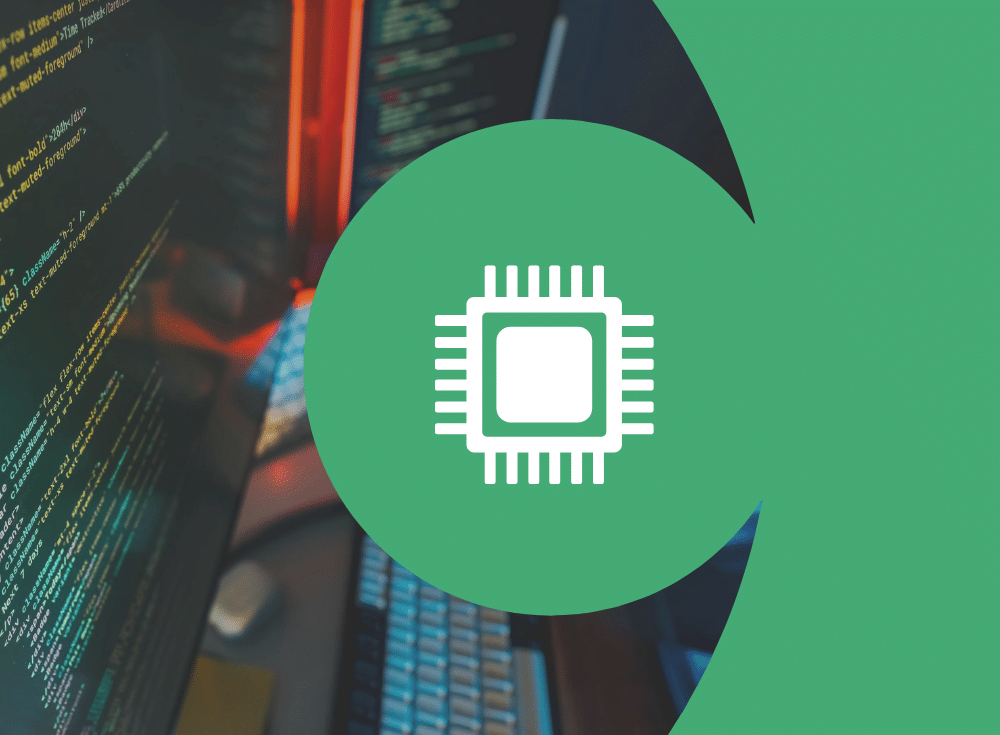TL;DR
Observability for AI keeps AI-Native teams – those who build products with AI at their core – focused on what matters: a great user experience, predictable unit economics, and faster iteration. In Part 4 of our series, we:
- Define AI-Natives
- Identify what makes them successful from a technology perspective
- And show how observability unlocks each one with practical instrumentation between the product and the LLMs.
Introduction
This blog is part four of our five-part series, discussing the need for observability of AI workloads and how different segments of the AI market approach observability. Earlier parts set the foundations and then zoomed into specific segments so you can connect strategy with day-to-day practice.
In Part 1, we discussed the new observability challenges introduced by AI and how observability telemetry control is more important than ever. In Part 2, we examined LLM Model Builders and how instrumentation supports training, RAG, and inference. In Part 3, we covered GPU Providers and the reliability signals that keep capacity aligned with demand.
Today in Part 4, we focus on AI-Natives and how observability turns product-to-LLM workflows into durable advantages.
Here’s the rest of our series:
Part 1: 5 keys to AI observability, Part 1: Foundations (Overview)
Part 2: Model Builders: 5 keys to AI O11y, Part 2
Part 3: GPU providers: 5 keys to AI O11Y, Part 3
Part 4: AI-Natives (You are here)
Part 5: Feature Builders (Coming on 11/11)
What we mean by AI-Native
We define AI-Natives as those companies or product teams where artificial intelligence isn’t just a feature, but the fundamental essence of the offering itself. These products are built from the ground up with AI as their core differentiator and value proposition. Instead of AI being an additive layer or a supplemental tool, it is the engine that drives the product’s primary function and user experience.
Consider examples such as sophisticated copilots that actively assist and anticipate user needs across various domains, or autonomous research tools that can independently gather, analyze, and synthesize information. Similarly, AI-powered safety platforms utilize advanced algorithms to detect and mitigate threats in real-time, often operating with a degree of autonomy that traditional systems cannot match. In all these cases, the product’s ability to deliver its core service is inextricably linked to its AI capabilities, making it genuinely “AI-Native.”
Some examples of AI-Native companies include Hebbia, which offers AI-powered docs and data analysis platform for financial teams, and Harvey, an AI legal assistant that drafts, reviews, and analyzes documents. More horizontally applicable are tools like Clay, which offers AI-powered prospect research, or Cursor, who is leading the charge in AI coding.
Success Drivers for AI-Natives
In the fast moving world of AI-natives there are three key drivers that can impact their success: user experience, unit economics, and product differentiation. Let’s take a look at each of these and see how observability can help.
1) User experience
What’s the business impact?
A superior user experience is paramount for driving product adoption, fostering loyalty, and ultimately, ensuring sustained business growth. When users encounter responses that are consistently accurate, delivered with speed, and maintain a high level of consistency, their trust in the product or service deepens considerably. This increased trust is a powerful catalyst for positive engagement, leading to a significant rise in adoption rates.
Conversely, a poor user experience, characterized by inaccuracies, slow performance, or inconsistent results, can quickly erode trust, leading to user frustration and, ultimately, increased churn. Therefore, prioritizing a seamless, efficient, and reliable user experience is not just a feature but a fundamental business imperative that directly impacts market share and profitability.
How can observability help?
Observability takes you beyond surface-level metrics to reveal the true bottlenecks hindering your system’s performance. Instead of being overwhelmed by a flood of alerts and a dashboard that merely reflects symptoms, you gain the ability to pinpoint the precise point of failure on the critical path.
With robust observability, you can correlate a sudden spike in latency directly with specific changes, such as:
- A new template deployment
- An updated model version
- Or the activation of a feature flag.
This granular insight allows for rapid identification of the root cause. Furthermore, by understanding these correlations and the actual impact of changes, you can significantly reduce alert noise, ensuring that your teams are only notified of issues that truly matter. This focused approach drastically shortens the time to recovery, minimizing downtime and its associated costs.
What to instrument between product and LLMs
- Request envelope: route, tenant, feature flag, model version, prompt template ID
- Performance: P95 and P99 inference latency per route, queueing time, and external call breakdowns
- Quality signals: safety outcomes, refusal rates, rollback markers, and win-rate against a baseline
- Experience SLOs: set at the boundary the user can feel, then anchor paging to SLO burn rather than raw metric thresholds
2) Unit economics
What’s the business impact?
Sub-linear cost curves support growth. As these companies scale their AI products, their cost per unit of output should ideally decrease, allowing them to grow more rapidly without a proportional increase in expenses. Runway improves, giving these companies more time to innovate and bring new AI products to market. Pricing flexibility increases, enabling them to offer competitive rates for their AI services or products without compromising profitability.
How can observability help?
Effective AI cost management relies on robust observability. In the realm of AI, token economics play a crucial role in cost. Understanding the cost per token, the number of tokens processed per request, and the overall token usage across different models and applications is essential. Observability directly supports this by:
- Providing the necessary data to analyze token consumption patterns
- Identifying areas of high usage
- And ultimately optimizing token efficiency
By linking token usage to specific prompts, routes, and components, organizations can make informed decisions to reduce unnecessary token expenditure.
A good observability strategy focuses on essential signals, avoiding unnecessary telemetry. This provides granular visibility into template, route, and component costs via telemetry data (metrics, logs, traces), enabling data-driven optimization of prompts, caching, and timeouts. Ultimately, observability transforms AI cost management into a precise, data-driven science, ensuring efficient and economical application operation.
What to instrument between product and LLMs:
- Token accounting: prompt tokens, completion tokens, cost per successful outcome.
- High-cardinality usage: tenants, teams, and features that drive cost patterns.
- Refinement at ingest: sample traces where safe, drop duplicate logs, keep the golden paths.
- Guardrails: per-team quotas and budgets that keep experimentation healthy
3) Product differentiation
What’s the business impact?
In a competitive market such as the hot AI space, a truly differentiated product is the bedrock of sustained success and customer loyalty. Without unique features, proprietary technology, or an unparalleled user experience that competitors cannot easily replicate, a business risks high customer churn. Customers will inevitably migrate to alternatives that offer better value, performance, or a more compelling solution.
The challenge of differentiation is compounded when a company’s resources are disproportionately allocated to maintaining reliability and managing operational overhead. If engineering and product teams are constantly battling outages, patching systems, or optimizing infrastructure just to keep the lights on, their capacity for genuine innovation is severely curtailed. This creates a vicious cycle: a lack of innovation leads to an undifferentiated product, which in turn necessitates more reactive work to retain customers, further diverting resources from strategic development.
How can observability help?
Robust observability practices are crucial for AI companies, transforming reactive firefighting into proactive optimization. By providing real-time insights into system performance, model behavior, and user interactions, observability empowers engineering and product teams to quickly identify and resolve issues.
This efficiency frees up valuable resources, allowing teams to focus on developing innovative features, refining algorithms, and enhancing the user experience. For AI, this translates directly into continually improving model accuracy, reducing latency, and delivering more intelligent and reliable solutions that are essential for standing out in a competitive market.
What to instrument between product and LLMs:
- Release markers: model rollouts and feature flags tied directly to traces and metrics for before-and-after comparisons
- Hot paths: always-on views for the services and hops that define the experience
- Open standards first: prefer OpenTelemetry for portable, vendor-neutral instrumentation so teams keep ownership of data
Practical checklist for AI-Natives: instrument the product-to-LLM workflow
- Define the workflow: user action → prompt build → model call → post-processing → render
- Capture the envelope: route, tenant, model, template, version, and flags
- Measure experience first: latency and success SLOs at the edge the user feels
- Track cost drivers: tokens by template and feature, retries per route, and cost per useful outcome
- Refine telemetry: keep signals used in on-call and analysis, prune the rest
- Standardize on OTel: keep data portable as tools and backends evolve
Open-source SDKs like OpenInference and OpenLLMetry gather much of the above telemetry directly from the LLMs and make it available in OpenTelemetry format for integration into observability platforms.
Summary
AI-Native organizations are built with AI at their core, leveraging its power to innovate, optimize, and gain a competitive edge. Their success relies on three interconnected pillars: experience, economics, and differentiation.
- Experience focuses on creating seamless, intelligent, and personalized user interactions.
- Economics emphasizes the financial viability and strategic value of AI, optimizing costs, demonstrating ROI, and improving productivity.
- Differentiation stems from continuous improvement and rapid iteration, allowing AI-Natives to quickly adapt and enhance their offerings.
Orchestrating these pillars is complex, making observability for AI-Natives indispensable. Observability provides crucial insights, acting as a “shared language” between SRE leads and platform teams, enabling them to align efforts and intentionally shape AI outcomes for optimal experience, economic efficiency, and rapid iteration, ensuring sustained growth and market leadership.
More reading
If you missed earlier posts, Part 1 sets the foundations, Part 2 unpacks Model Builders, and Part 2 explains what GPU providers do for AI teams and why observability matters. This Part 4 focus on AI-Natives builds on that same through-line, and the final entry will explore Feature Builders and their observability patterns.
FAQs
What is an AI-Native product?
A product where AI is the core value. Success depends on quality, speed, and cost per useful outcome, which is why we instrument the entire workflow between product and LLMs.
Where should we start with instrumentation?
Begin at the user boundary. Capture the request envelope and set experience-level SLOs. Add change markers for model versions and flags so you can compare before and after.
How do we control observability cost while expanding coverage?
Keep the signals that drive decisions. Sample traces where error budgets are healthy, drop duplicate logs, and route high-cardinality streams through a pipeline that can enrich and aggregate.
Which SLOs make sense for LLM-backed features?
Use user-visible SLOs for latency and success rate. Treat the LLM call and adjacent hops as part of the same critical path and measure what the user feels.
Why choose OpenTelemetry?
OpenTelemetry keeps instrumentation portable and vendor neutral. That protects your investment and makes it easier to evolve your stack over time.
What signals help most during incidents?
Route, tenant, model version, template ID, recent changes, and a quick comparison of healthy versus degraded paths. Find the longest hop and fix what shortens recovery time.
How does observability reduce risk during fast releases?
Tie releases to telemetry. Compare before and after quickly. Promote with confidence when signals look good and roll back fast when they do not.
O’Reilly eBook: Cloud Native Observability
Master cloud native observability. Download O’Reilly’s Cloud Native Observability eBook now!




